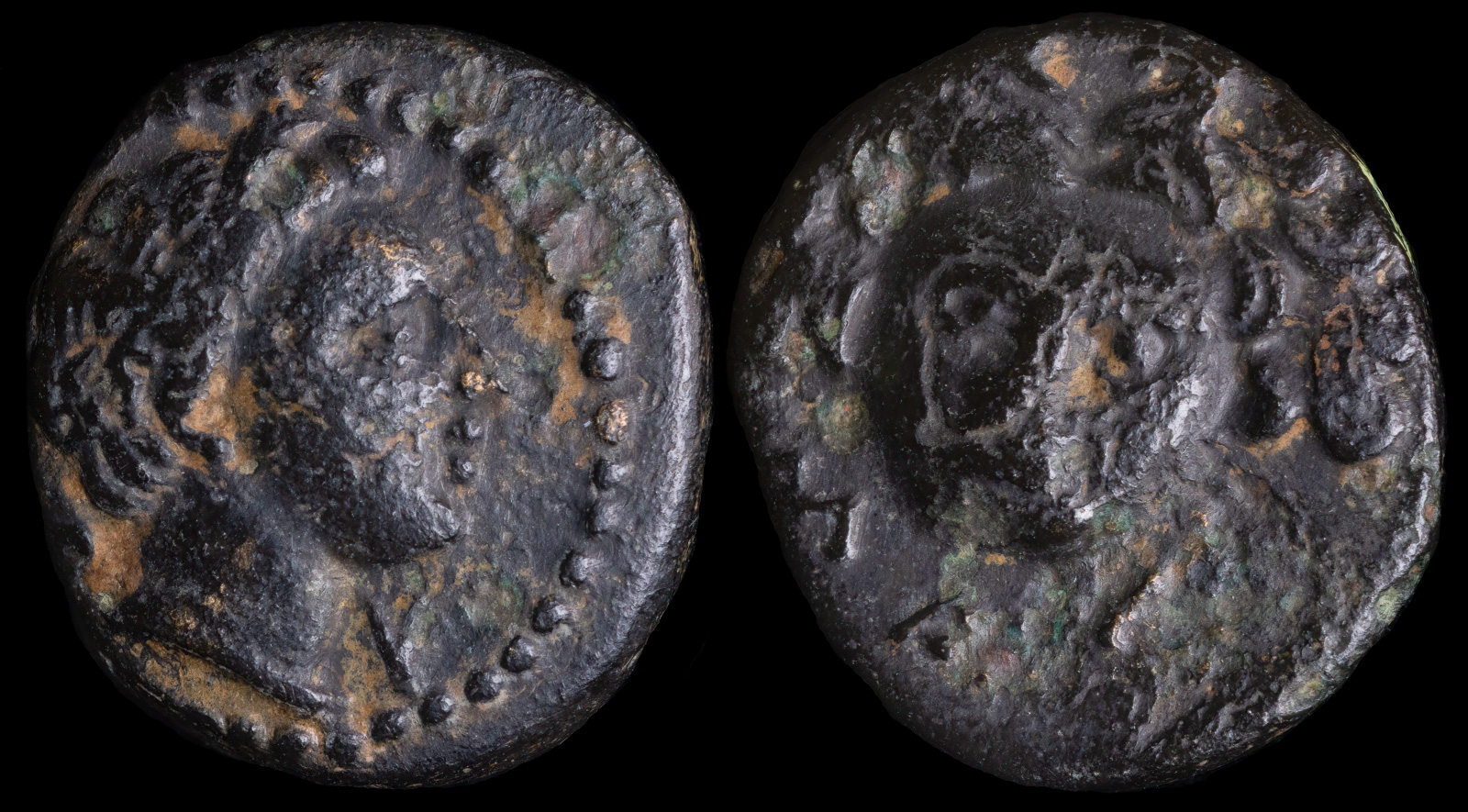
Cilicia, Mallos
400 – 350 BCE
AE 12mm 1.28g
Head of Pyramos right wearing corn-wreath /
MAΛ; gorgoneion facing.
SNG Levante 172
Per local legend, Mallos was founded by two brothers, Amphilochos and Mopsos.
Mopsos was a famous seer who founded several cities in Cilicia and Pamphylia. Amphilochos was also a seer and a son of Amphiaraos, who was an Argive hero. Amphiaraos was a reluctant member of the Seven Against Thebes and participated even though he knew it would mean his death. He therefore instructed his sons to avenge him.
Amphilochos afterwards set sail for Cilicia and founded Mallos, along with its oracle, with his half-brother Mopsos. He was eventually killed by either Apollo or by Mopsos. In the Mopsos legend, which Strabo related, they killed each other.
The oracle of Amphilochos was a large room where people went to sleep, and during the night the gods would answer their questions in their dreams. Pausanias described the oracle as “most trustworthy.”
The city was founded at the mouth of the Pyramos river. The river god Pyramos is depicted on the obverse of this coin.
When Alexander the Great arrived, Mallos opened their gates to him. There, he paid homage to Amphilochos and declared that the city would be free from taxes, since the city descended from Argives, as did he – since he was a descendant of Herakles. Alexander also built a bridge over the Pyramos river. The city then assisted him in the Siege of Tyre.

Cilicia. Mallos
late 4th century BCE
AR Obol 9,5mm, 0.4g
Bearded head of Kronos to right.
R/ Demeter advancing left, holding grain ear and flaming torch
SNG France -. SNG Levante 158
Alexander the Great arrives at Mallos, builds a bridge over the Pyramos, sacrifices to Amphilochos, and exempts it from paying taxes.
Mallos gives ships to aid Alexander III in the Siege of Tyre.
Following the victory in the Battle of Ipsos, Cilicia comes under Seleukid control with Seleukos I Nikator. This included Aigai.Tarsos, Soloi, Issos, and Mallos.
Mallos and Tarsos ally against Antiochos IV Epiphanes.